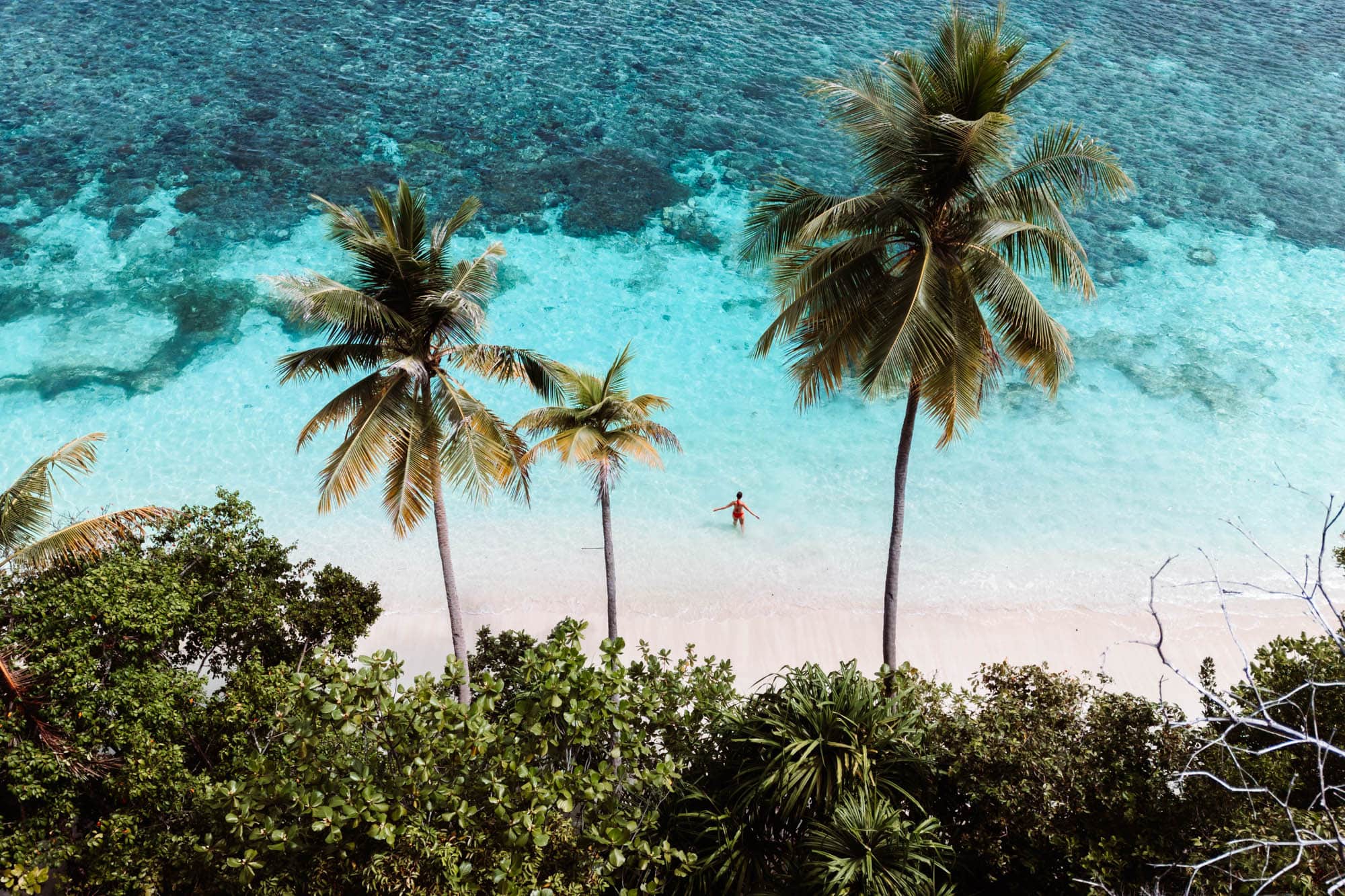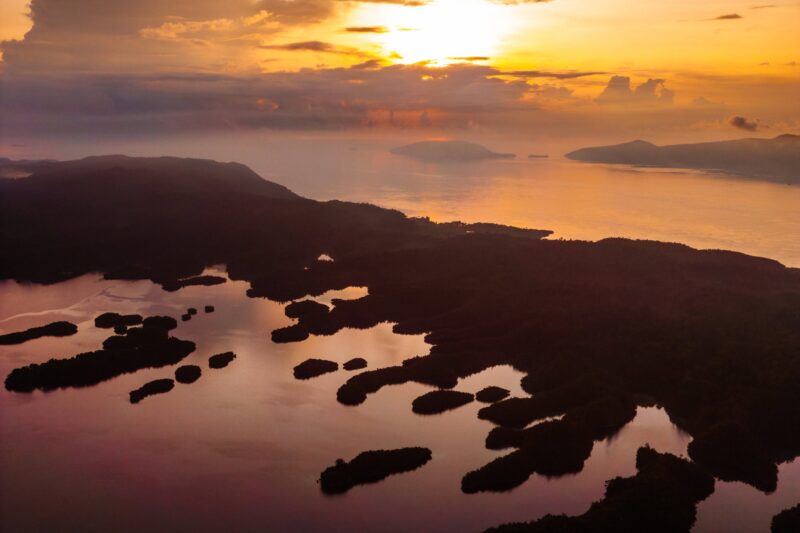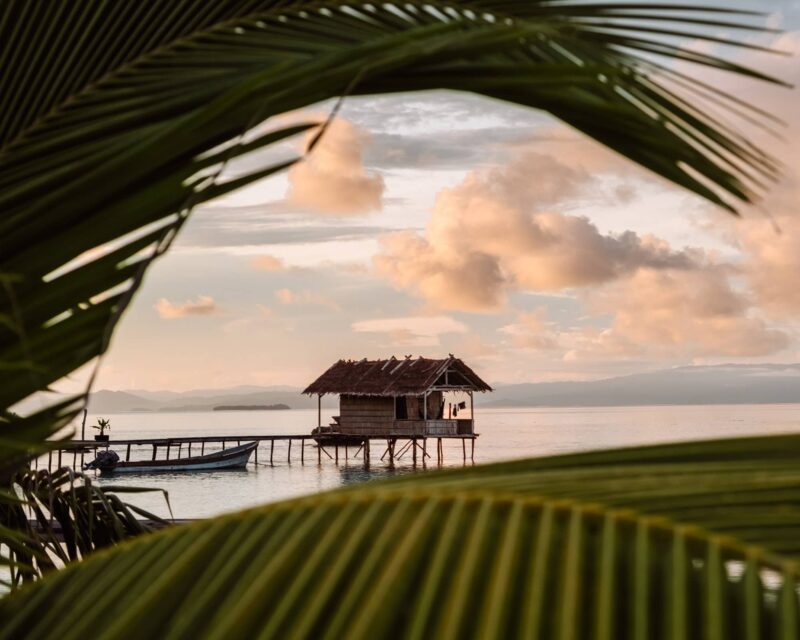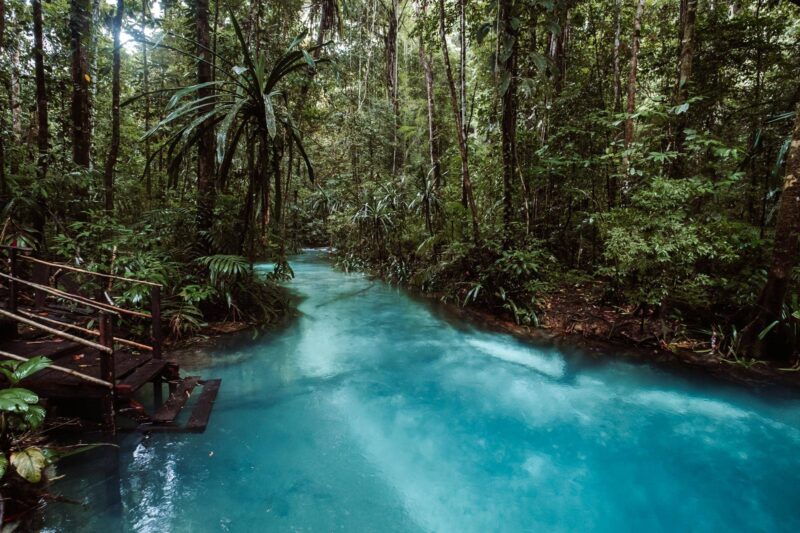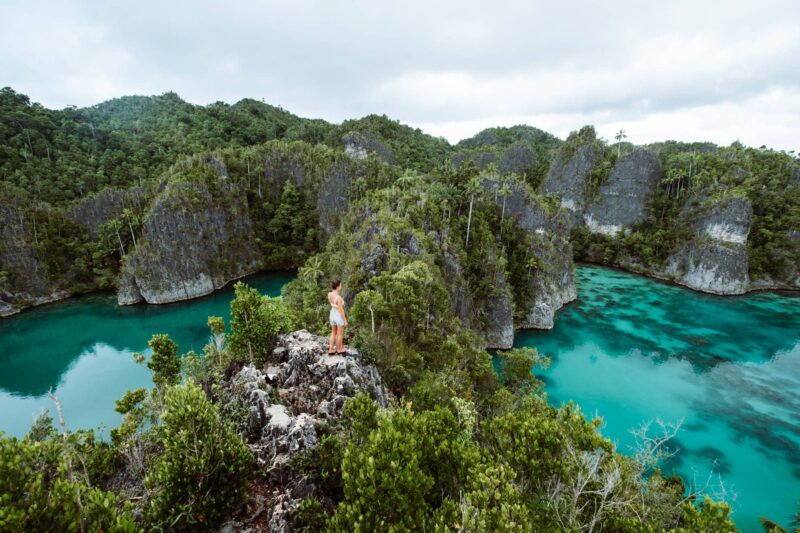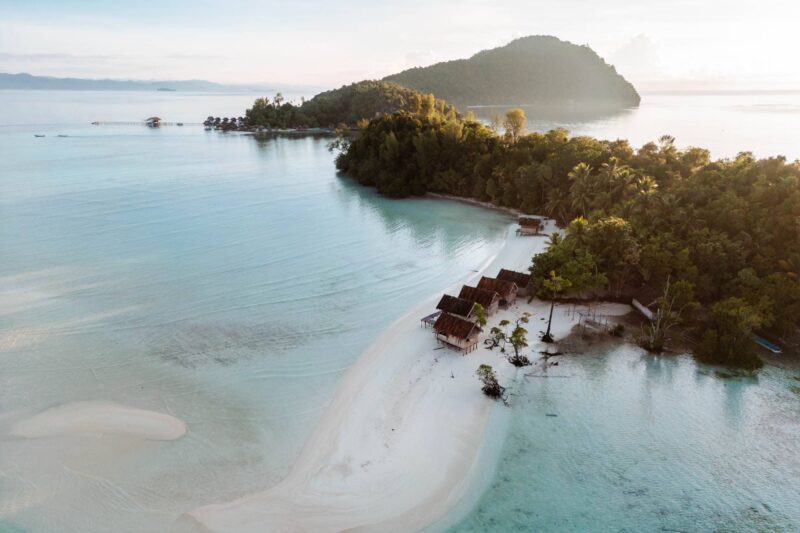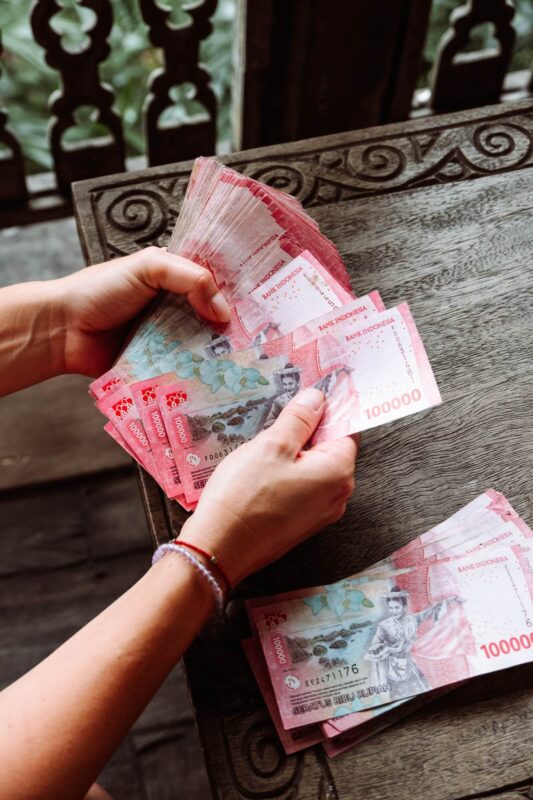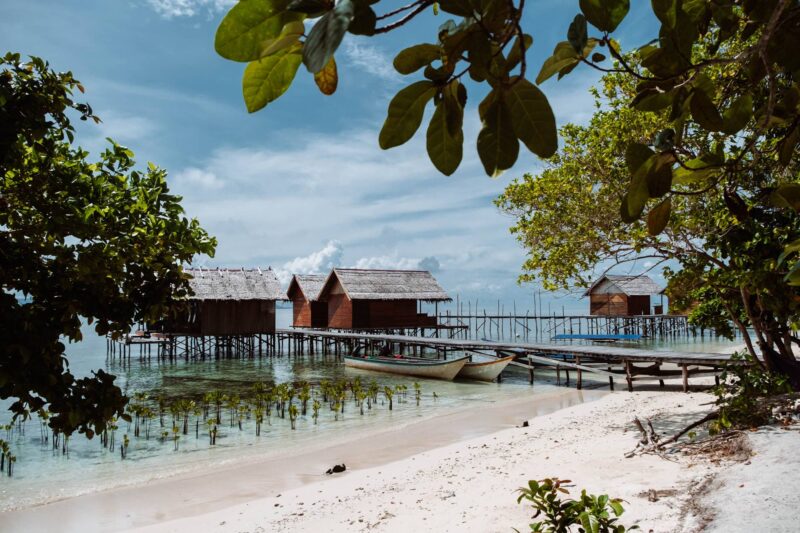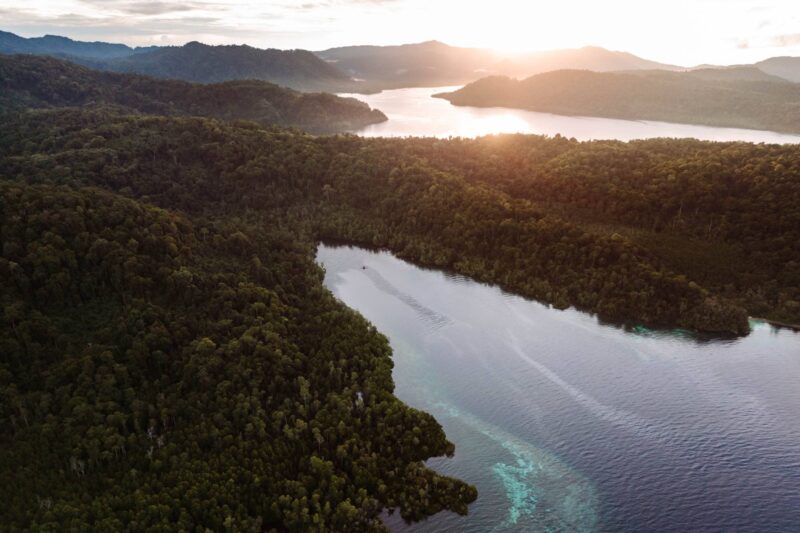The perfect itinerary for Raja Ampat doesn’t exist because it will look different for everyone. Are you coming mainly to dive, or do you want to experience the diversity of Raja Ampat? What makes it even more challenging is that you have a choice of up to 1,500 different islands. Fortunately, it’s beautiful everywhere in Raja Ampat, so there’s no wrong choice. To help guide you and give you a good picture of this destination, we’re sharing our itinerary for Raja Ampat here. With this route, you’ll visit the beautiful islands of the last paradise on Earth!
A Trip to Raja Ampat Requires Good Preparation
The islands of Raja Ampat are remote, and if you want to visit this unique place, it’s smart to prepare well. Traveling here works quite differently than in other parts of Indonesia. Especially since there are no shops, you don’t want to forget anything. Before booking your trip, be sure to check out our practical travel tips for Raja Ampat and definitely take a look at our packing list for Raja Ampat. This way, you’ll be well-prepared for your adventure and make the most of your trip.
How Many Days Do You Need for Raja Ampat?
How many days you need for Raja Ampat depends entirely on what you want to do and see. Some people go for a diving course and stay for three weeks, while others tick off the highlights in five days. Most people spend around 8 to 12 days in Raja Ampat, and that’s what we would recommend. If you want to follow our full itinerary below, we recommend setting aside at least 11 days for this. If you have less time, you can also skip one or more islands or visit them on a day trip.
Choose Between Independent Island-Hopping, a Liveaboard, or One Fixed Base?
There are three ways to visit Raja Ampat, each with its own pros and cons.
Independent Island-Hopping (Our Choice)
If you have at least 7 days and want to see a lot of Raja Ampat, it’s great fun to make a little round trip. You stay a few days on different islands, taking tours or going diving from there. The advantage of this is that you get a change of accommodations and also different cooks. Many homestays serve similar meals, so a change can be refreshing. Moreover, it’s more efficient than visiting different islands on a day trip from a fixed base because you don’t have to travel back and forth each time. You spend fewer hours on the boat but will need to pack your bag from time to time. If you go for this type of travel, our itinerary is ideal. We recommend at least 11 days for this, but if you have a little less time, you can also visit one island less.
Liveaboard
If you’re visiting Raja Ampat mainly for diving, don’t mind some luxury, and have the budget, a liveaboard might be right for you. You’ll usually stay 7 to 14 days on a luxury sailboat with a chef, and make around three dives a day. You don’t have to think about anything, and everything is taken care of. Prices start at around €2000 per week, but for most liveaboards, you’ll quickly pay more. The downside is that you never know what the group will be like, and you see less of the islands themselves. The upside is that you’ll dive a lot and enjoy luxury and convenience. You can compare and book all liveaboards in Raja Ampat via LiveAboard.com.
Exploring the Islands from One Fixed Base
If you have five days or less for Raja Ampat, one fixed base is probably a better choice than island-hopping, as your trip might otherwise feel rushed. Choose a centrally located island like Gam, Kri, or Mansuar, and take day trips to nearby islands. You can still use our itinerary below as inspiration for day trips in Raja Ampat.
Our Itinerary for Island-Hopping in Raja Ampat
The itinerary below is the route we took and can be recommended to everyone. This way, you’ll visit the most beautiful islands of Raja Ampat!
Sorong & Waisai
To get to Raja Ampat, you fly to Sorong and then take the ferry to Waisai, the gateway to the islands of Raja Ampat. Both cities are best not to stay in longer than necessary. The ferry from Sorong to Waisai departs twice a day at 09:00 and 14:00. The same departure times apply for the route from Waisai to Sorong. If you arrive late in Sorong or have an early flight from Sorong on your return, it’s recommended to book a night at Swiss-Belhotel Sorong. This is one of the few good and affordable hotels in Sorong.
Kri & Mansuar
Once you arrive in Waisai, you can take a small boat directly to your first island. The islands of Kri and Mansuar lie next to each other and are the perfect place to relax after the long journey. The enjoyment starts right away, as many famous dive and snorkel spots are nearby, including Cape Kri. At Cape Kri, a world record of 374 different fish species was counted in one dive! This makes the underwater world here truly spectacular. Kri is one of the busier islands in Raja Ampat, but the atmosphere is still relaxed and cozy. Another must-do is the hike to the viewpoint, where you can watch the most magical sunsets. Curious about what else there is to do? Check out our tips for Kri and Mansuar.
Transportation between the islands in Raja Ampat: You travel between the islands by small boat. It’s helpful to book your first boat in advance via your accommodation so that you can travel directly from Waisai to Kri or Mansuar. Other boats can be arranged locally. With a bit of luck, you can sometimes share a boat with other travelers. The price is per boat, not per person, and most boats fit up to four people.
Batanta
1.5 hours by boat from Kri and Mansuar is Batanta, one of the larger yet still wild islands of Raja Ampat. Here, you’ll find dense jungle with only a few fishing villages along the coast. On the mainland, you can spot many rare animals, like the cassowary, a 1.7-meter tall flightless bird with a bright blue head. With a bit of luck, you may also encounter a dugong (sea cow) in the waters around Batanta. You can also do jungle treks, visit waterfalls, and snorkel with giant manta rays. Read our tips for Batanta to learn more about this unique island.
Tip: When traveling between Kri and Batanta, you’ll pass the tiny but absolutely paradise-like island of Wai. Ask when booking your boat if you can stop here to snorkel and visit the island. Usually, this is no problem or you might pay a little extra. On the island, there are walking paths where you can easily spot flying foxes (large fruit bats) and the cuscus (a tree-dwelling marsupial). Snorkeling is also stunning here. If you have the budget, you can even choose to stay at the beautiful Wai Resort.
Fam Islands & Piaynemo
The next stop on this Raja Ampat itinerary is the Fam Islands, sometimes called the Pam Islands. Around the Fam Islands, you’ll find many famous snorkel and dive spots, including Melissa’s Garden, Fam Wall, and Rufus Island. These places can easily be combined with a visit to the world-famous Piaynemo. This archipelago is made up of small and large limestone islands that are close together, with a lagoon of turquoise water between them. There are two different viewpoints where you can admire the spectacular landscape. Read our tips for Fam Islands and Piaynemo to read all about this highlight of Raja Ampat.
Gam & Arborek
The next and final island on this itinerary is Gam. This peninsula is the perfect base for diving and snorkeling spots like The Passage, Batu Lima, and Citrus Reef. If you’re into wildlife, Gam is the place to search for the Red Bird of Paradise. Gam is especially known for being the best island to spot this unique bird. You might recognize them from the documentary Planet Earth 2, where you might have seen the impressive mating dance of the males. With their long feathers, they jump and wave them in the air to impress the female. A visit to Arborek is also a great day trip from Gam or as a stop when traveling from Fam Islands to Gam. This tiny island is relatively densely populated by Raja Ampat standards. It’s fun to walk around the village and observe the local life. Of course, snorkeling and diving here are also phenomenal, with Manta Point being a highlight. Check out our tips for Gam to see what else there is to do.
Kali Biru (Blue River)
After all the islands, it’s time to see something different in Raja Ampat. On your return journey to Sorong, you can first visit a special spot called Kali Biru. This place has the nickname Blue River, and you’ll quickly understand why. Hidden in the jungle is a crystal-clear blue river with icy-cold water. The water gets its color from the minerals in the water and the light-colored stone on the riverbed. It’s a lovely spot to take a refreshing dip in the middle of the jungle! Read our tips for Kali Biru beforehand, as it’s good to arrange your transportation in advance.
Tip: Travel directly from Gam to Kali Biru at sunrise. This way, you’ll be there just before 09:00 and avoid the large crowds that arrive after 09:00. You can also take the afternoon ferry to Sorong on the same day, so you won’t lose an extra day.
Sample Schedule for Your Trip Through Raja Ampat
Completing this itinerary in 11 days may seem a bit rushed, but the distances between the islands are small – about 2 hours by boat on average – so on travel days, you can still do something else. If you’d rather move around less, you can also choose to skip one island and spend more time on the other islands. Below is a sample schedule for this itinerary through Raja Ampat.
- Day 1: Travel to Kri & Mansuar
- Day 2: Kri & Mansuar
- Day 3: Kri & Mansuar
- Day 4: Kri & Mansuar
- Day 5: Batanta
- Day 6: Batanta
- Day 7: Fam Islands & Piaynemo
- Day 8: Fam Islands & Piaynemo
- Day 9: Gam
- Day 10: Gam
- Day 11: Kali Biru and Return Journey

Our Favorite Places to Stay in Raja Ampat
We’ve compiled a list of the most beautiful homestays and resorts in Raja Ampat so you can easily choose. Tourism in Raja Ampat is growing rapidly, so it’s smart to book your accommodations as early as possible since the best places are often fully booked well in advance. Most accommodations in Raja Ampat are homestays, but there are also a few resorts. The resorts are often quite pricey, usually starting at $220 per night or more. Homestays come in all shapes and sizes and are much cheaper. Overall, all accommodations are simple, and you’re going quite back to basics in Raja Ampat. Don’t be afraid of bugs, and it’s best to leave your hygiene standards at home. Besides the location of the homestays, differences mainly lie in hygiene and the meals. All accommodations include three meals a day, even if this isn’t always clearly indicated on booking sites.
